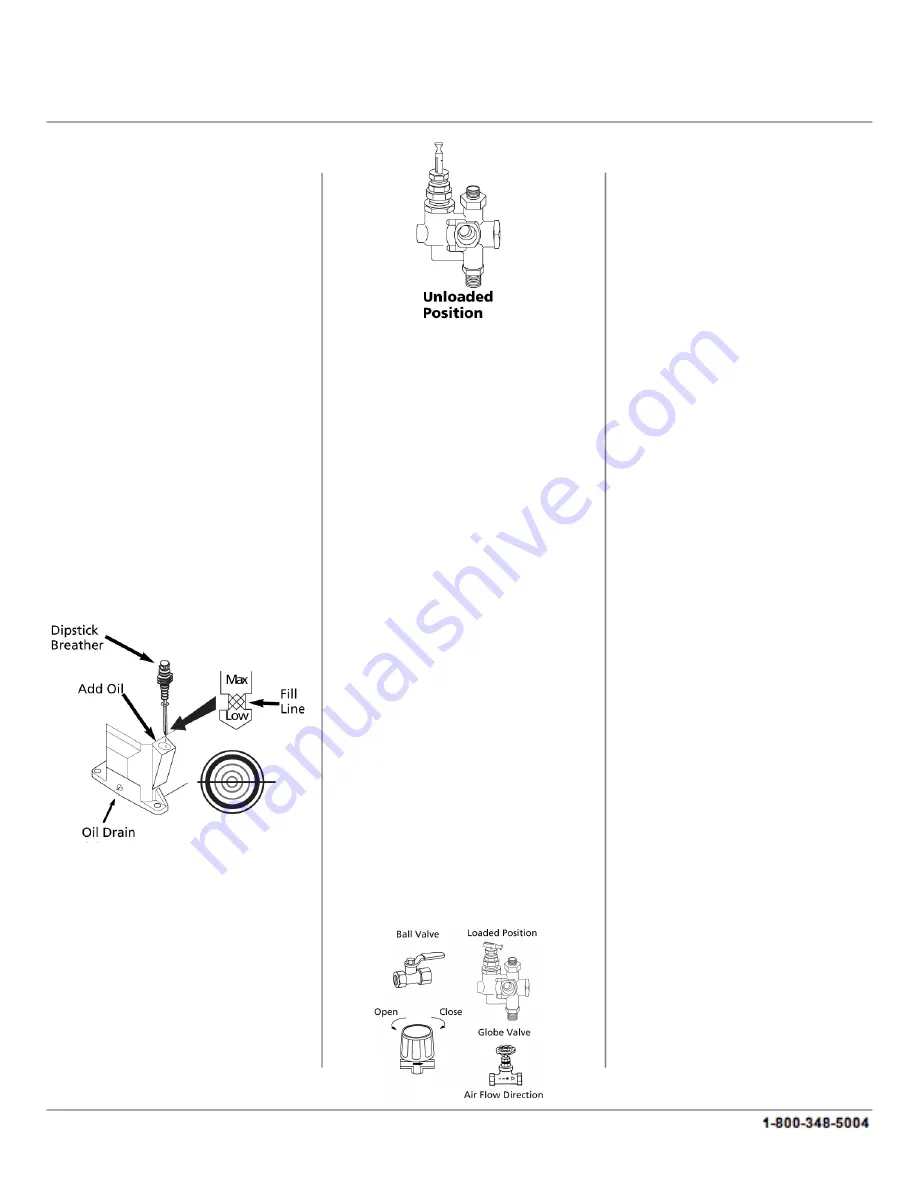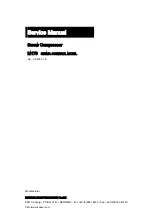
3
OPERATION
Start Up
1) Add 87 octane (or higher)
unleaded gasoline to the engine
gas tank and SAE 10W-30 oil to
the engine oil tank. A different
viscosity oil may be required if
the compressor is operated at
different ambient temperatures.
Please refer to the engine
manual for more details.
2) Remove the compressor
dipstick breather and fill the
pump to the proper oil level.
Use a single viscosity, ISO 100
(SAE 30) non-detergent
compressor oil. Do not use a
multi viscosity oil such as 10W-
30.
3) Turn the outlet valve or
regulator knob counterclockwise
to open the airflow.
4) Turn the manual unloader
lever to a vertical position in
order to allow the compressor
pump to run without
compressing air.
Starting A Gasoline Engine
1) Move the choke lever to the
CHOKE position and turn the
stop lever towards the ON
position.
2) Pull the start grip lightly until
resistance is felt, then pull on the
start grip briskly to start the
engine.
3) As the engine begins to warm
up, gradually move the choke
lever to the OPEN position.
4) Run the compressor at an
unloaded speed for
approximately 30 minutes in
order to break in the pump.
5) After approximately 30
minutes of run time, move the
unloader lever down to the
loaded position and turn the
regulator knob clockwise. The
compressor will begin to pump
air into the tank at this time.
When the maximum tank
pressure is achieved, the
compressor automatically
unloads, which brings the
engine to idle. The engine
remains at the idle state until the
pressure in the tank falls to a
preset level. The engine will then
accelerate and the compressor
will pump additional air into the
tank.
MAINTENANCE
WARNING: Release all
pressure from the system
before attempting to perform
any maintenance, relocate,
service or install the unit.
Check the air filter, oil level and
gasoline level before each use in
order to maintain efficient
operation of the unit.
The ASME safety valve should
be checked before each use. Pull
the ring on the safety valve and
allow the ring to snap back into
its normal position. This valve
automatically releases air if the
tank pressure exceeds a preset
maximum. If air leaks after the
ring has been released, or if the
valve is stuck and cannot be
actuated by the ring, the ASME
safety valve must be replaced.
Do not attempt to tamper with
the ASME safety valve.
With the engine OFF, clean any
debris from the engine, flywheel,
tank, air lines and pump cooling
fins.
Never attempt to repair or
feedback@natitools.com





























